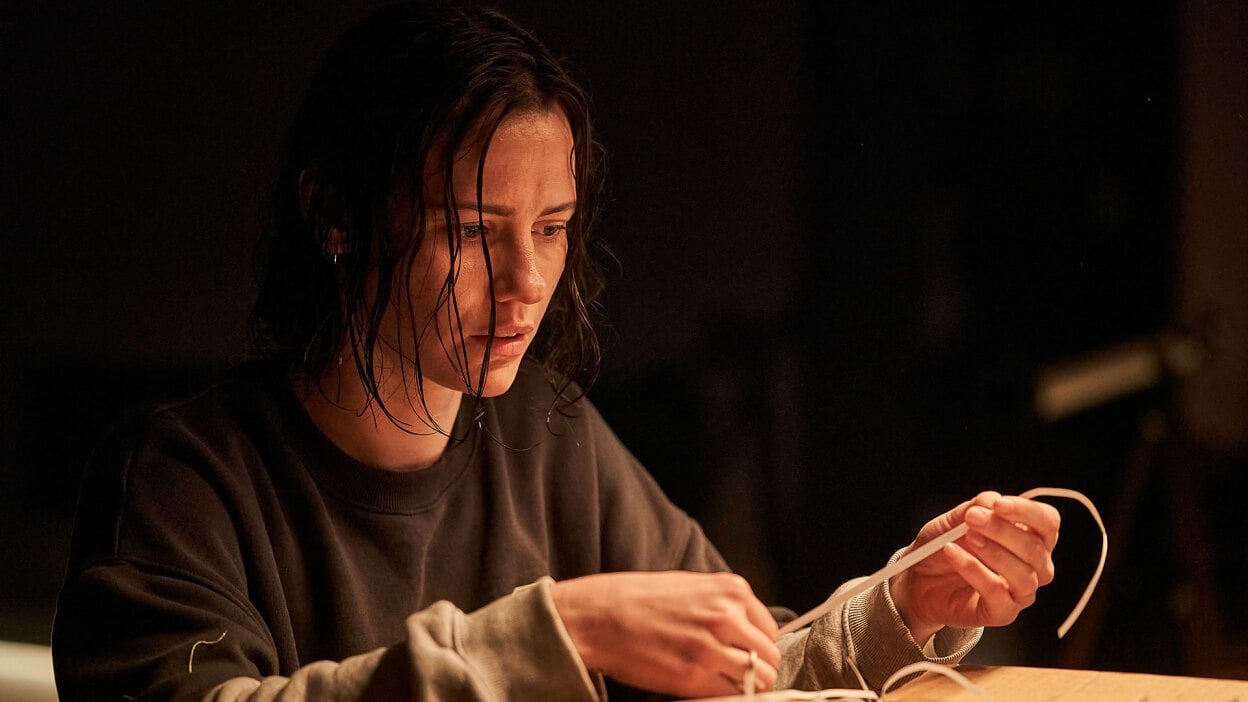Monolith starts out seeming like a typical science-fiction movie with mysterious black bricks that unexpectedly show up in people’s homes worldwide. The idea that these bricks might be from outer space is hinted at throughout the film.
The central character, a journalist, is intrigued by these strange bricks and begins gathering stories about them for her podcast, Beyond Believable. As she interviews those who have encountered the bricks, she uncovers something unexpected.

Monolith stands as a rather abstract film, leaving room for multiple interpretations. Some viewers may believe that the black bricks are tied to extraterrestrial life. However, we lean towards a more grounded and relatable interpretation of the film.
What Is the Message of the Film?
As we pointed out earlier, the film leaves much to be interpreted. There’s a possibility that it’s about aliens, and these beings might have used the bricks to spread a disease. But, in our view, this film carries a much deeper message about mental health.
Throughout the interviews, we learn that all the people connected to the black bricks have experienced personal trauma. Floramae was fired from her job, Lang was mourning his brother’s death, and the caller’s grandfather had guilt over not knowing he had an illegitimate child.
Even the journalist herself had gone through her trauma when she lost her job. At the film’s end, the journalist vomits up a black brick. This could represent the repressed guilt that she has finally been forced to confront.
When the brick transforms into a replica of herself, it could symbolize her fractured state of mind that unravels throughout the film. The moment she conquers this duplicate could represent her overcoming the guilt she feels for her role in damaging Floramae and Paula’s lives.
One more piece suggesting a focus on mental health is when the journalist edits her podcast, rearranging the conversation she had with Floramae. This scene may reflect how memories of traumatic events become distorted over time.
We’re simply theorizing since there’s no clear-cut answer. There are still several unanswered questions. For instance, why did Floramae have the brick in the first place? What are the strange symbols found inside the bricks? We don’t know for sure, but maybe we missed something.
If you have any theories, feel free to share them.
What Does the Final Scene Truly Mean?
The journalist’s final line in the film is, “All you have to do is listen.” This might serve as a powerful reminder about the importance of listening to those who are struggling with their mental health. Talking through one’s feelings is often a healthy way to deal with depression and trauma.
In the case of the journalist, her podcast was her outlet, and her listeners allowed her to speak her mind. By opening up, the journalist was able to face her past and process her suppressed emotions. It’s possible that we aren’t meant to take the film literally.
Instead, it might be a parable with key lessons on how we approach mental health in our own lives.



